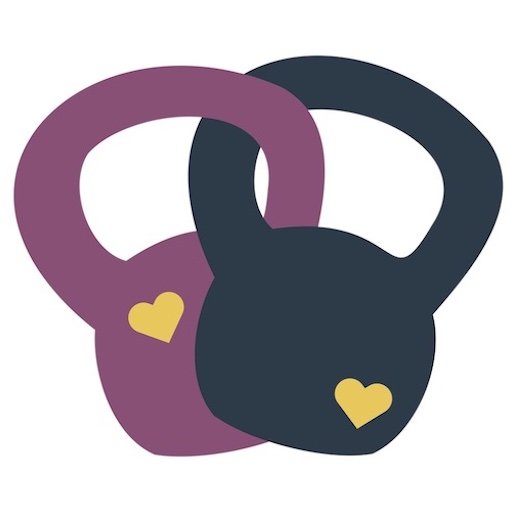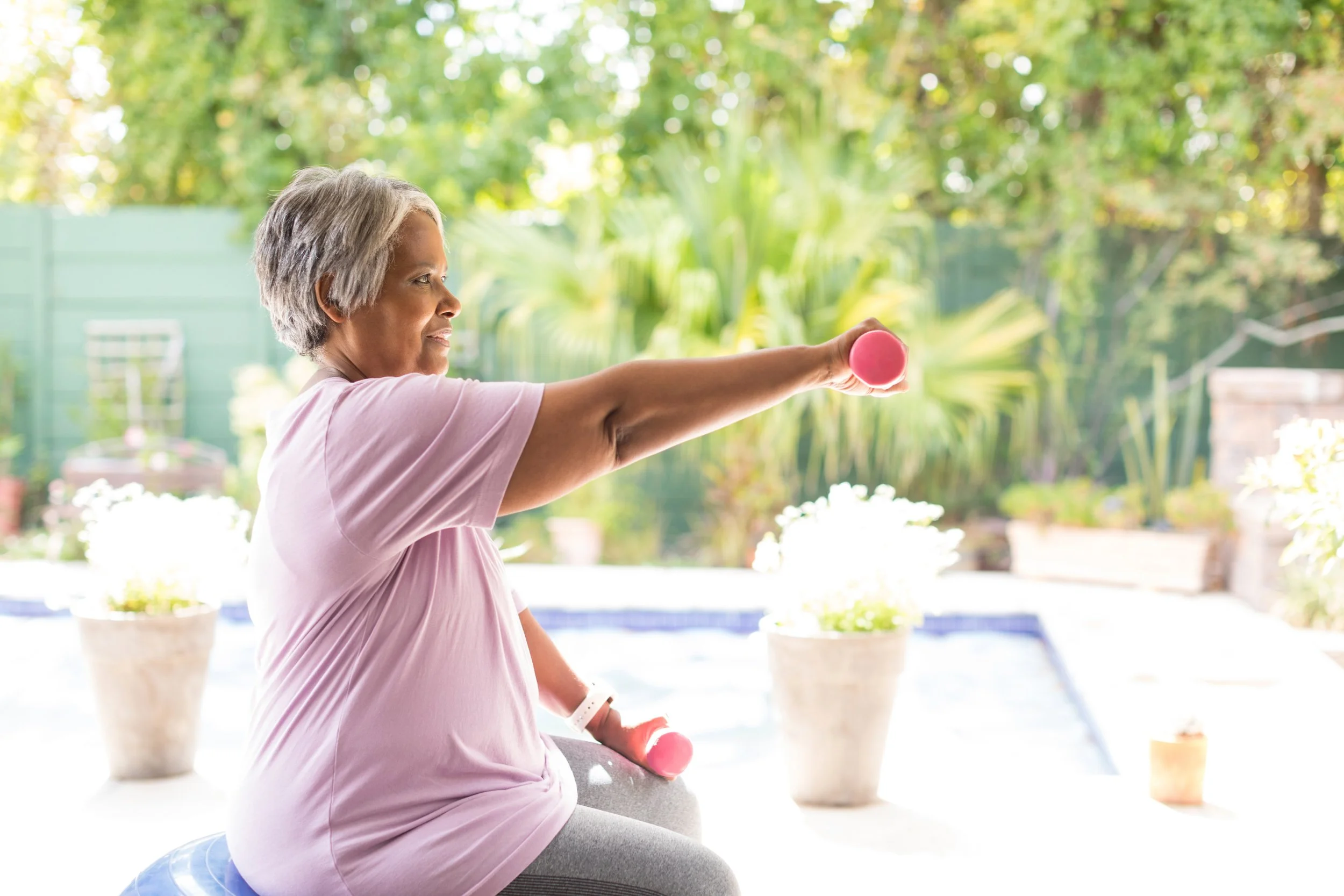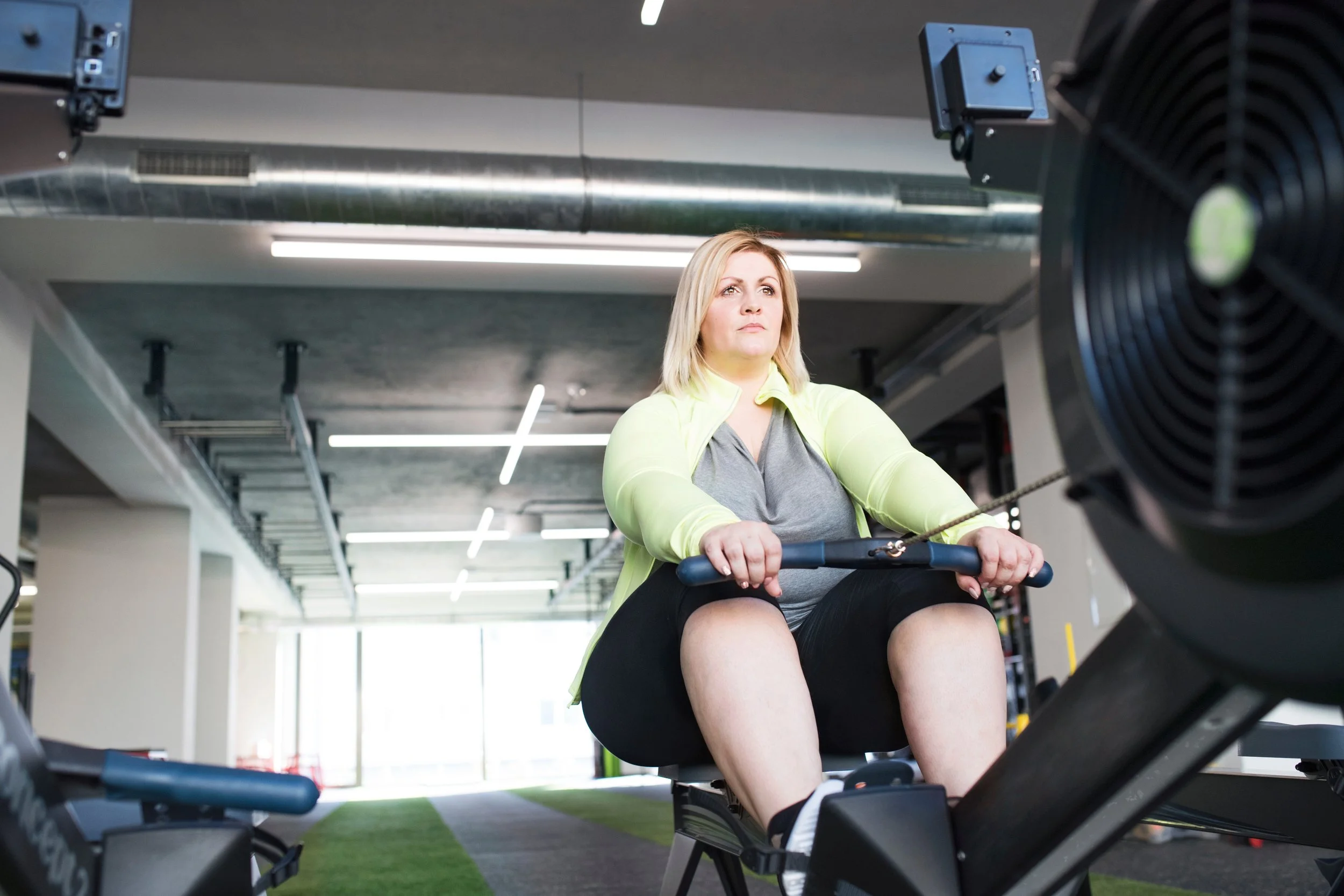Powering Through Perimenopause with Purpose
By Angel Austin
If you’re in your forties or fifties and suddenly feeling like your body is fighting you because you're experiencing frozen shoulders, achy hips, sciatica, tendinitis, charley horses, and general joint misery, know that you're not alone and you're not imagining things. In addition to the other physical, mental, and emotional changes you are noticing, the pain you feel makes you want to just curl up in a ball and give up on realizing the quality of life you desire. We're here to ask you to extend a measure of grace to yourself. You might be dealing with what many medical professionals are now calling the musculoskeletal syndrome of menopause.
The signal-to-noise ratio is even harder if you also live in a larger body, or are already battling a disability or chronic illness, because the pain, fatigue, flares, and stiffness may overlap with your baseline pain levels. The hormonal shake-up of perimenopause can act like a magnifying glass to your discomfort.
This isn’t all about doom and gloom. It’s about reclaiming agency. There may be hope. You don’t have to be afraid. You just need informed, intentional strategies and a team that understands what's happening to have your back. We definitely suggest a medical professional who can help you navigate your hormonal changes, but we also believe having a plan in place that includes strength training to help with physiological changes is crucial.
You have your pick of qualified trainers that can support your efforts, but here are some specific ways that we here at PowerUP Movement Co. can help you prepare for and thrive through this transition. Let’s start with the basics first.
What exactly is the “musculoskeletal syndrome of menopause”?
Recent scholarship is starting to name what many of us have felt intuitively. The term refers to the cluster of symptoms affecting muscles, joints, connective tissues, and bones during the menopausal transition. It includes:
Arthralgia (joint pain) and stiffness
Loss of muscle mass (sarcopenia)
Reduced tendon and connective tissue remodeling
Accelerated bone loss/osteoporosis risk
Greater susceptibility to injury (tendinitis, “frozen” joints, ligament stress)
Recent studies say that more than 70% of people transitioning through menopause will experience musculoskeletal symptoms, and ~25 % may become functionally disabled by them.
How you may feel:
You may wake up some days and your glutes feel like mush, or your Achilles twinges. Maybe the shoulder you injured in your 20s rebels again. You feel general joint stiffness more days than not. If you're disabled or live with chronic pain already, the discomfort of joints that are already taxed can exacerbate intensity and injury risk.
These problems don’t just come out of nowhere. Estrogen plays a regulatory role in connective tissue, inflammation, and recovery. Once estrogen declines or fluctuates, those protective effects diminish and your joints, muscles, and tendons feel it because it previously worked more efficiently to control inflammation, support collagen turnover, help muscle repair, and support joint health.
Why this is extra challenging if you have chronic illness or disability?
If you already feel substantial pain in your baseline state, or essentially the way you normally feel most of the time, menopause can behave like an amplifier. Any “new” aches and stiffness can mask or aggravate flare-ups of your underlying condition. This means you may a difficult time with recovery, making mobility work or resistance training feel more punishing. It might feel harder to detect cause vs. overlap. You'll wonder, “Is this my usual flare, or is menopause doing its thing?” Motivation feels harder when you’re always fighting pain or exhaustion and it’s easy to get caught in a “spiral of fear, and think, “If I try to move, things will hurt worse.” Unfortunately, this is the pattern that accelerates deconditioning, bone loss, and weakness.
One qualitative study of postmenopausal women doing resistance training found that accountability and professional/emotional support were strong motivators, and that over time, participation shifted from symptom relief to potential enjoyment and a sense of strength. This is a key insight that Sarah, the creator of PowerUP shares often. We don’t have to hit “perfection” from day one. We build relationships with movement and trust with our bodies.
What you can do and how PowerUP can help!
Here’s what emerging evidence plus movement science suggests as best practices and how a structured, trauma-, size-, and ability-informed coaching team can support you.
1. Daily mobility work (about 10 minutes) – we have multiple resources to show you how to improve mobility with gentle, consistent movement to help preserve and improve joint range of motion, lubricate tissues, and counter stiffness.
Example: 10 minutes of joint circles, soft-tissue glides, and mild stretches can “bank” mobility. We can show you how by crafting mobility routines tailored to your restrictions (seated modifications, shorter holds, etc.) and help you build consistency with accountability, reminders, and check-ins.
2. Resistance training at least 3 times a week - Strength training is the main weapon against muscle loss, tendon deterioration, and bone thinning. Intervention trials show improvements in menopausal symptoms, strength, muscle composition, and quality of life.
Example: One study found that 15 weeks of resistance training nearly halved vasomotor symptoms and improved menopause-specific quality of life. It doesn’t matter if you're in a larger body or living with chronic illness, we are ready to support you, at your own pace, with manageable progressions, and built-in rest.
Power Up coaches can help you:
Design a strength program that respects your injury history, chronic conditions, and body size
Introduce load gradually (progressive overload)
Modify movements when pain or flares emerge
Provide cues to reduce compensatory patterns (like overworking one side)
Monitor recovery and adjust
It’s imperative to respect your limits when estrogen is lower because your capacity to remodel connective tissue, repair trauma, and recover, decreases.
3. Lift heavier/bone-stimulating loads (where safe) - Bone remodeling slows as estrogen declines. To ward off osteoporosis risks, we need to “stress” bones (safely) in weight-bearing, impact-friendly ways.
Example: Resistance training plus load-bearing movements like weighted carries, squats, and deadlift, help tremendously. PowerUP coaches can help you progress in a way that taxes bone without overloading joints.
4. Recovery, regulation, and inflammation control - Movement isn’t the only thing to consider. Because estrogen decline can increase systemic inflammation, you can also benefit from:
Adequate sleep
Nutrition rich in anti-inflammatory foods (omega-3s, antioxidants)
Stress regulation/reduction
Active recovery like light walking, movement for increased mobility, low-impact movement
At Power Up, we can help you build a program for you that will help you balance your stress load and recovery, teach you regulation tools, and help you notice patterns when pain is creeping back or recovery is lagging.
5. Continuous adaptation and community support - Because your body is changing, what worked last year, last month, or even last week, may no longer serve you. A periodic retuning and realignment can be helpful. This is another reason why a coaching relationship is powerful.
At PowerUP we can help you monitor your progress and help you adjust for flare days or setbacks. We offer peer/community support to help you avoid the isolation that can accompany the frustration and overwhelm you might be experiencing. We are also happy to share resources to better inform you about the ways that menopause is affecting your movement and how you can be intentional about offsetting these changes, where possible. Most of all, we want to help you reclaim confidence, but just in movement, but in your life.
How does this look and what can I expect?
Imagine that you’re a person in your early 50’s. You’ve had minor joint issues for years. You deal with intense shoulder pain, Achilles twinges, knee and hip pain, and occasional plantar fasciitis. You’re not new to movement, but lately the soreness lingers, the morning stiffness is worse, and you’re catching yourself avoiding heavier lifts out of fear. On some days, your pain remains a 4/10 ache under the surface, and those are good days.
Doctors have diagnosed you with tendonitis, frozen shoulder, bursitis, or more, but what feel like random, unrelated diagnoses may be part of a larger pattern. Your connective tissue is struggling on a shifting hormonal foundation.
With support from Power Up, you:
Start a 10-minute mobility habit you can actually stick with
Begin two gentle resistance sessions a week, with incremental progress
Build toward safely hitting heavier movements for bone and connective tissue resilience
Learn recovery tools to help reduce the inflammation
Stay connected to a coaching and peer network so you don’t go it alone
Over 6–12 months, you might find that your stiffness drops, aches fade, and you recover faster. You feel stronger, more stable, and not as afraid of movement. Your bones/soft tissue begin to adapt and new injuries are less aggressive. You regain agency over your body instead of feeling betrayed by it.
Will there still be flare days? Yes, but they won’t feel like proof you’ve failed. They’ll be signals. You learn to listen and not to bail. You’ll learn to rest and begin again.
Can you relate? Let us help!
Perimenopause and menopause are turning points, but they are also inflection points. With intention, support, and a plan for movement, you can meet them head-on.
At PowerUP Movement Co., our team is here to walk beside you. We design programs for people who have been hurt, are healing, have bigger bodies, or live with chronic conditions. We want you to reclaim trust in movement, reclaim resilience, and show up as your strongest self, not just surviving, but thriving.
If you’re curious to explore how to build a menopause-resilient movement plan in your unique context, contact us today!


